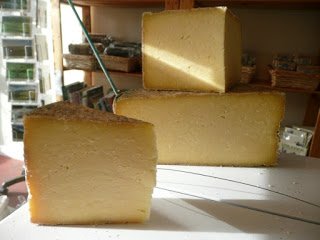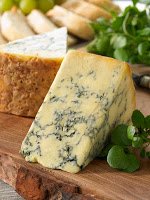Wallace's smile
wouldn't have been quite so wide if he'd known that the nice bit of
Yorkshire Wensleydale brought to him by Gromit could well have been
made in Shropshire, Cheshire or even (whisper it) Lancashire.
Like many territorial
cheeses, most Wensleydale is now manufactured on an industrial scale
miles away from the beautiful Yorkshire valley where it was
traditionally made. Most cheesemongers know there is an exception to
this sad state of affairs in the form of the Wensleydale Creamery,
which is based in Hawes in the North Yorkshire dales.
Not that the Wensleydale Creamery would have
been too worried by the competition. Ribblesdale is a fraction of the
size of its neighbour, as Iona Hill explains: “They employ 200
people and have a turnover of £22m. We employ two people - me and
cheesemaker Stuart Gatty - and our turnover is £350,000. There's
really no comparison.”
That said, Hill is keen
to play up the fact that she also makes Wensleydale in Hawes,
pointing out that in the 2011 Great Taste Awards her cheese received
two stars, while her larger neighbour picked up just one for its
Wensleydale. “We know we can make it, it's just that we don't have
the market because everyone associates Hawes with Wensleydale Dairy,”
she says. “It's a shame because my big mantra is that there are two
cheese makers in Hawes.”
Despite the difference
in size, or perhaps because of it, relations between the two
companies are good. Richard Clarke, Wensleydale Creamery's head
cheesemaker uses Ribblesdale's premises once or twice a month to make
an unpasteurised Wensleydale - something that would be tricky at
creamery which is dedicated to pasteurised milk.“I'm happy to work
with them rather than against them,” says Hill.
 Ribblesdale also makes
its own unpasteurised Wensleydale, using milk from a local pedigree
herd, as well as a pasteurised version and a new product called
Yorkshire Bowlers - red waxed balls of Wensleydale that look like
cricket balls.
Ribblesdale also makes
its own unpasteurised Wensleydale, using milk from a local pedigree
herd, as well as a pasteurised version and a new product called
Yorkshire Bowlers - red waxed balls of Wensleydale that look like
cricket balls.
However, cow's milk
cheese remains a small part of the business with 85% of production
coming from hard goat's cheeses, including best sellers such as
Original Goat and Superior Goat gouda.
To continue reading this article, which was first published in the Dec issue of Fine Food Digest, click here and turn to p21.




